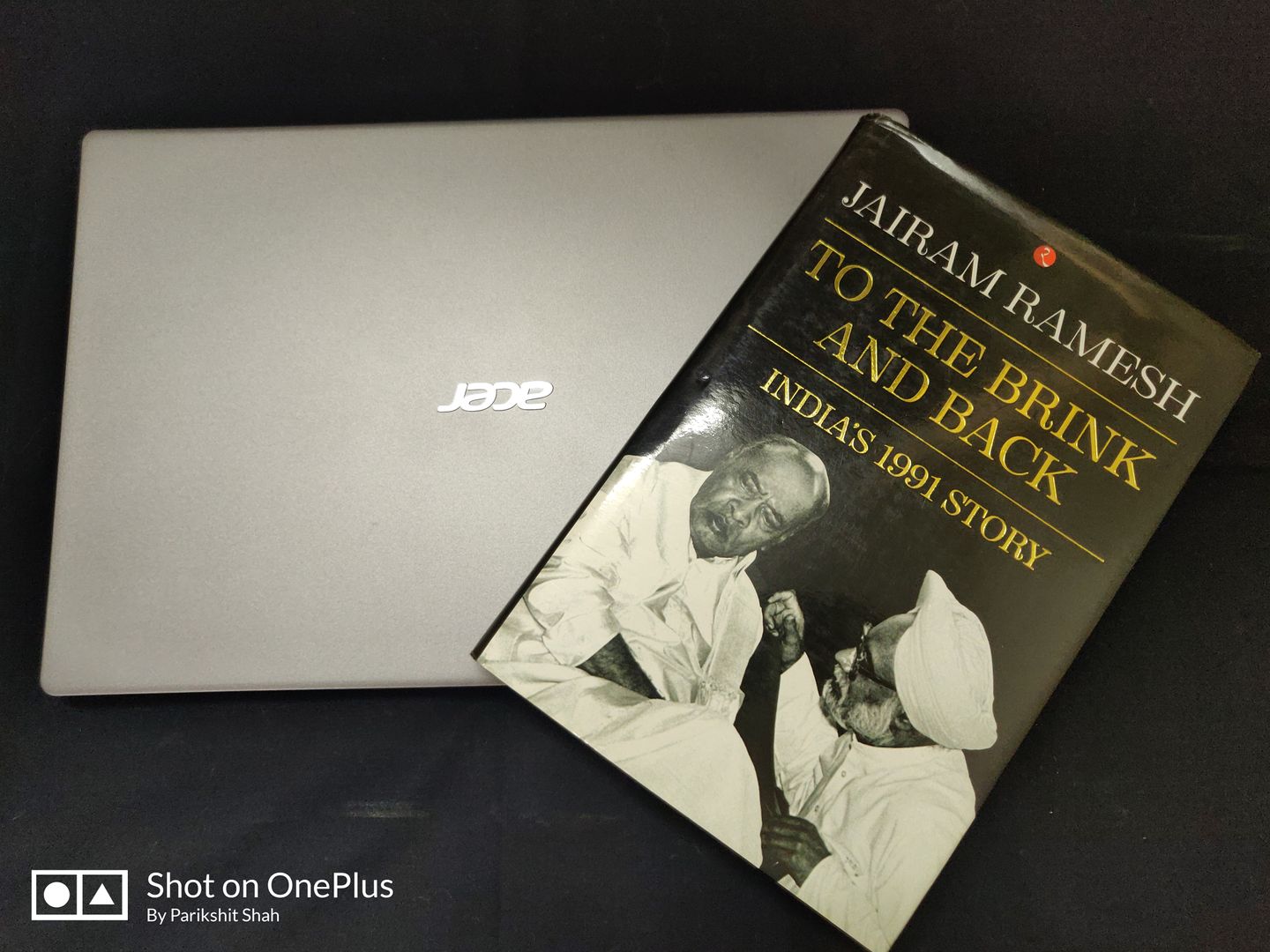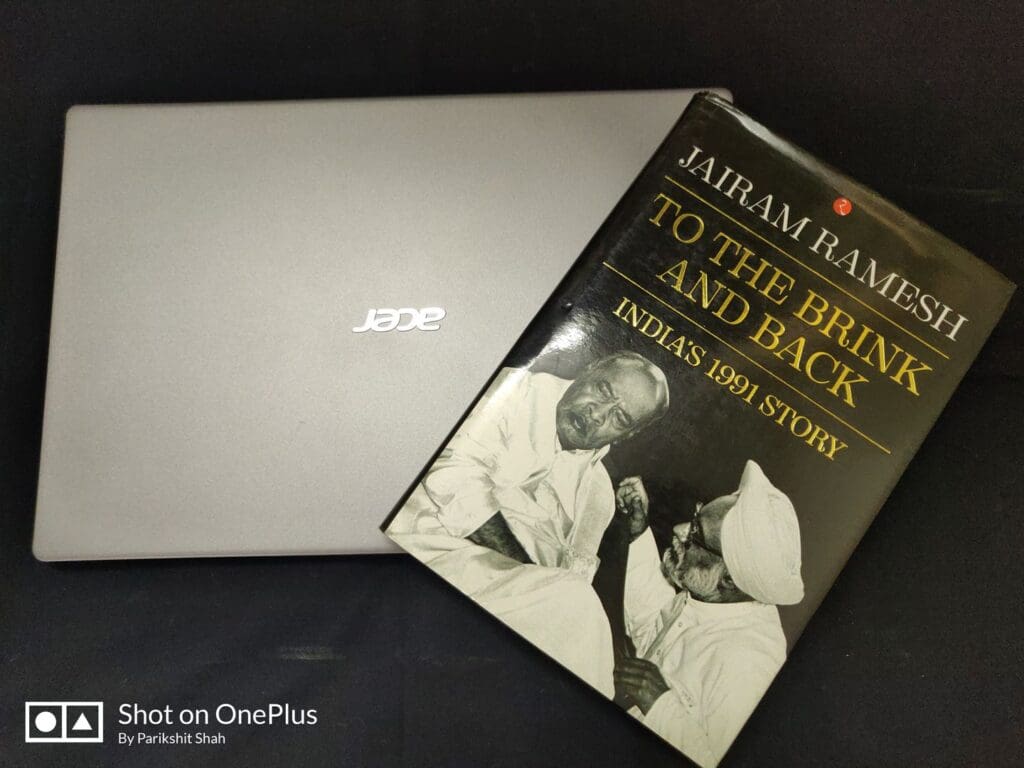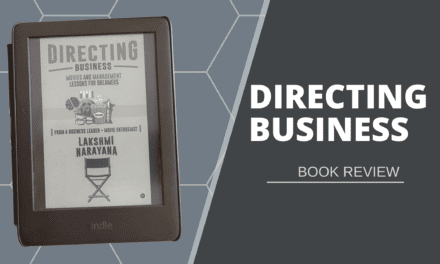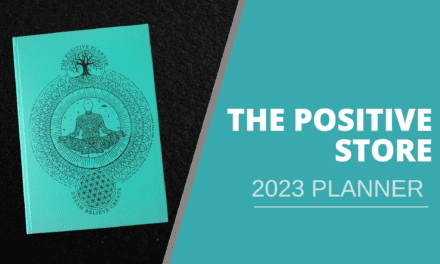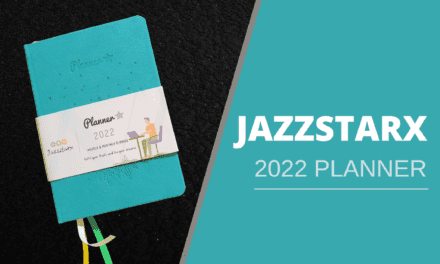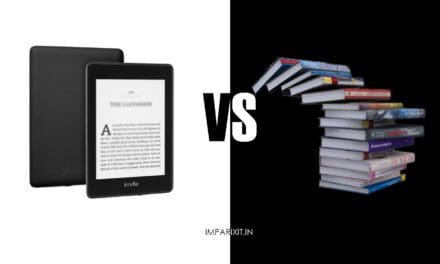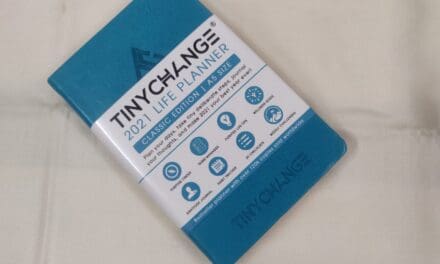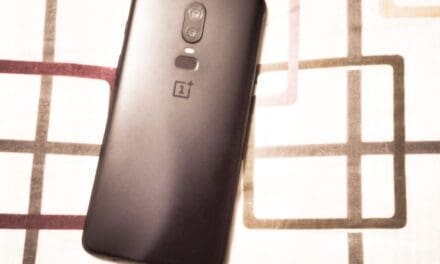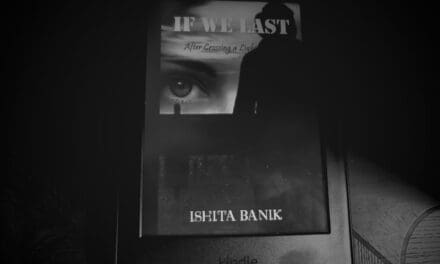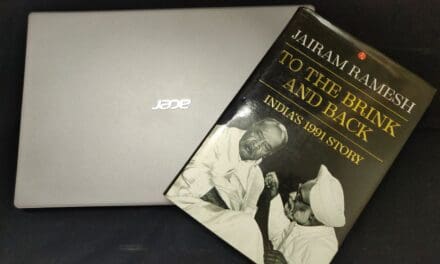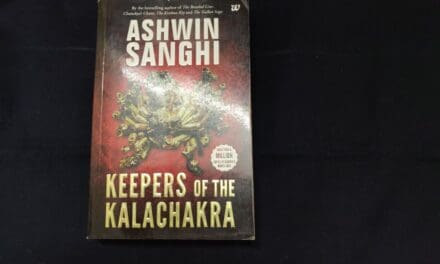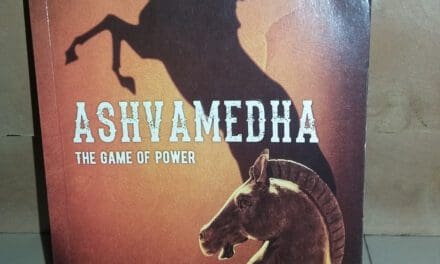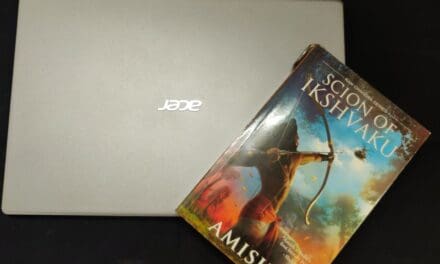The short review of the book named “To the Brink & Back” by former minister and one of the political leaders whom I admire, Jairam Ramesh. This book is purely an account of the 1991 economic crisis & how the Indian government handled it. Being a student of economics, being a 22 years old guy who has a high interest in politics, and being a person who sees Dr. Manmohan Singh as an idol, this book is far valuable for me.
As the book cover of To the Brink and Back itself expresses, this book primarily focuses on two most important ministers of that time, one is a former Prime Minister of India, Narasimha Rao & then Finance Minister Dr. Manmohan Singh. The book, as written by Jairam Ramesh, gives very valuable information about his role in that crucial era of Indian history. The book starts by listing all important dates that witnessed the Indian economy changing. The timeline from 20-June-1991 to 31-August-1991 is given in the first two pages of the book which makes reading more understandable later on. In the first chapter itself, Jairam Ramesh says that “The book {therefore} is a personal story, one participant-observer’s narrative of the action-packed days of June, July and August 1991.”
As the very first pages of the book quote Karl Marx “Men make their own history, but they do not make it as they please; they do not make it under self-selected circumstances, but under circumstances existing already, given and transmitted from the past”, Narasimha Rao was a man who was destined to make the mark in history. The book mentions how prime ministers, earlier than Rao, attempt reforms but couldn’t address the fundamental issues of the Indian economy and how 1991 reforms actually changed the entire economy of the country forever. From how Rao became prime minister to how Dr. Singh became finance minister of the country, the books give very detailed and lesser-known accounts of the events. Special thanks to the author for enlightening us about the details of the 1991 crisis which was the result of economic, political, and international happenings. The second chapter of the book reads three occasions when Dr. Singh was talking about the economic crisis, before becoming FM.
This book gives the very good knowledge about how Finance Minister Dr. Manmohan Singh not only handled the situation with his academic brilliance but how much confidence he was having in what he was going to do. I will any day choose someone as FM who will be true enough to the countrymen to say that “It would be wrong to say that I have a magic wand to bring down prices. What I can promise is that in three years’ time, prices could be made stable if a strategy of macroeconomic management is pursued now.” This book makes us travel those days in a very impressive manner. Fast-paced and detailed, quite a page-turner. From devaluation of the rupee to the International Monetary Fund (IMF) way, this book tells us everything about who did and thought what. Someone who is not sentimental while talking about economics will love to read Dr. Singh’s answers and speeches on Rupee’s devaluation, allegations of government bowing down before IMF and transferring gold to Bank of England to get credit so that the country could meet its liquidity requirements. Along with Dr. Singh, Jairam Ramesh gives us a glimpse of P. Chidambaram’s role as Commerce Minister, which he played very effectively.
For me, the best thing about the book was the way the author has pen down proceedings of parliament during the period when the economy was going through the period of reforms which were definitely not something for which political parties will willingly agree. Definitely worth reading how N. Rao who was leading a minority government got vital reforms in industrial policy said through. The debates in parliament that happened and the author has pen them down makes really happy because then the lawmakers of the country are seen debating the questions and issues rather than creating chaos out of it. Whether it is PM’s speech on 9-July-1991 addressing the nation or him defending his government in parliament with his political tricks, the books give us a picture of how Rao’s political genius facilitated economic reforms.
At the end of the book, Jairam Ramesh recalls his unexpected transfer to Planning Commission and how hard it was for him to accept that. The author has expressed his dissatisfaction with the Congress party over the way it treated Narasimha Rao in the last few years. He has also narrated his views on Dr. Manmohan Singh as a key player in the economic reforms. The book has annexures of almost 50 pages that include many documents, not easily available or much seen before, which are not only worth reading but gives valuable knowledge to understand 1991 better.
To end, I will recommend To the Brink and Back by Jairam Ramesh to everyone who has the least interest in the political and economic history of India, this is a must-read…
You can read more book reviews by me here.

